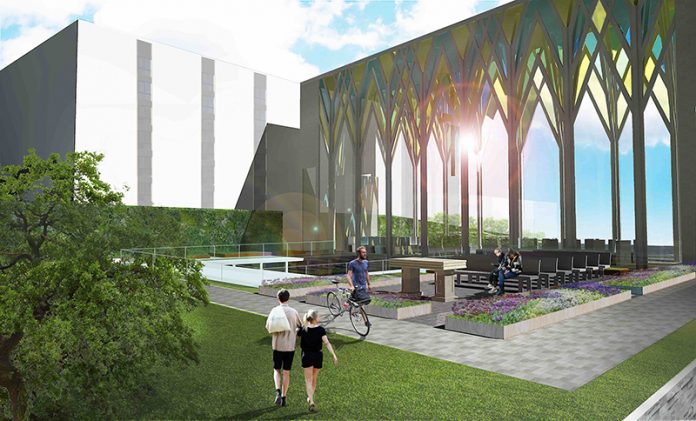
A rooftop garden in the design by Ugochukwu Nnebue and Sina Moayedi offers views to the east at sunrise. Image courtesy of Catholic University of America
(RNS) Over the past few decades the concept of a “church” — in fact, of all kinds of religious buildings — has been shifting, some might even say radically transforming, because of big changes in people’s attitudes about religion.
Surveys by groups such as Pew Research and Trinity College have shown a precipitous drop in people who belong to organized religions, particularly in the Christian and Jewish faiths and among those under 35.
Today the largest single segment of the population in the U.S. describes itself as “nones”: affiliated with no organized religious group. People of all ages are turning away from organized religion but they are not necessarily choosing to be atheists. It seems like they are looking for a more genuine, personal experience of the spiritual in their lives. Many call themselves “spiritual but not religious.” … read more



